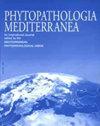First report of Erwina amylovora in Tuscany, Italy
IF 1.9
3区 农林科学
Q2 AGRONOMY
引用次数: 2
Abstract
2-years-old plants of Pyrus communis showing symptoms of fire blight disease were sampled in an orchard in Tuscany (Italy) during Autumn 2020. Plants were obtained the previous spring from a commercial nursery located in a region where the disease is present since 1994. The collected material was processed in the lab in order to verify the presence of the bacterium Erwinia amylovora, the causal agent of fire blight. Pure isolates showing white mucoid colonies and levan producers on Levan medium were putatively assimilated to E. amylovora. DNA was extracted from the cultures and analysed with three molecular assays, including duplex PCR of the 29-Kb plasmid pEA29 and the ams chromosomal region, sequencing of the 16S rDNA and recA gene regions, two real-time PCR assays on symptomatic plant tissues. All tests confirmed the presence of E. amylovora. Symptomatic and surrounding plants were removed and immediately destroyed according to the regional phytosanitary protocol. This outcome poses a serious threat for fruit orchards in the area.意大利托斯卡纳发现紫霉属植物首次报道
2020年秋季,在意大利托斯卡纳的一个果园里,对表现出疫病症状的2年生梨进行了取样。植物是去年春天从一个商业苗圃获得的,该苗圃位于自1994年以来该疾病一直存在的地区。收集的材料在实验室中进行处理,以验证引起火疫病的病原菌淀粉状Erwinia amylovora的存在。纯分离株在levan培养基上显示白色黏液菌落和levan生产者,推定与E. amylovora同化。从培养物中提取DNA并进行3种分子分析,包括29kb质粒pEA29和ams染色体区域的双链PCR, 16S rDNA和recA基因区域的测序,以及对症植物组织的2种实时PCR分析。所有测试都证实了淀粉样芽孢杆菌的存在。根据区域植物检疫规程,有症状的植物和周围植物被移走并立即销毁。这一结果对该地区的果园构成了严重威胁。
本文章由计算机程序翻译,如有差异,请以英文原文为准。
求助全文
约1分钟内获得全文
求助全文
来源期刊

Phytopathologia Mediterranea
生物-植物科学
CiteScore
4.40
自引率
8.30%
发文量
28
审稿时长
6-12 weeks
期刊介绍:
Phytopathologia Mediterranea is an international journal edited by the Mediterranean Phytopathological Union. The journal’s mission is the promotion of plant health for Mediterranean crops, climate and regions, safe food production, and the transfer of new knowledge on plant diseases and their sustainable management.
The journal deals with all areas of plant pathology, including etiology, epidemiology, disease control, biochemical and physiological aspects, and utilization of molecular technologies. All types of plant pathogens are covered, including fungi, oomycetes, nematodes, protozoa, bacteria, phytoplasmas, viruses, and viroids. The journal also gives a special attention to research on mycotoxins, biological and integrated management of plant diseases, and the use of natural substances in disease and weed control. The journal focuses on pathology of Mediterranean crops grown throughout the world.
The Editorial Board of Phytopathologia Mediterranea has recently been reorganised, under two Editors-in-Chief and with an increased number of editors.
 求助内容:
求助内容: 应助结果提醒方式:
应助结果提醒方式:


